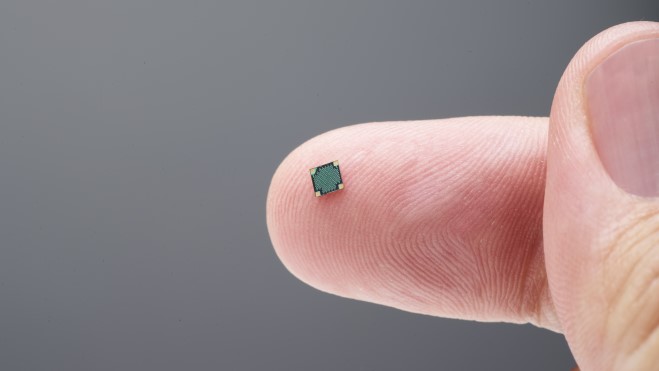The world’s thinnest IR sensor: groundbreaking development and new possibilities
Miniaturization and rapid scaling of electronic devices are the driving forces for both chip manufacturing and printed circuit boards. So it's no surprise that the two have teamed up to develop the world's thinnest infrared sensor - just 0.17 mm thick. Read on to learn how this was achieved and what products will be coming to market soon.
Cross-industry collaboration in the development of new products
In the past, the printed circuit board industry, which originated in the printing industry, had little overlap with the chip industry. Now a convergence is taking place, driven by ongoing cost considerations and the need to miniaturize electronic components. As other megatrends emerge, we at Varioprint strongly believe that increased collaboration is the key to future value creation and product development. For this reason, Varioprint is working closely with the Swedish company JonDeTech Sensors AB in the area of miniaturization.
Next generation IR sensors developed by JonDeTech and Varioprint
Founded in 2008, JonDeTech successfully uses nanotechnology to increase the energy efficiency and safety of electronics in new products. Together with Varioprint as its main production partner, JonDeTech has developed a new generation of infrared sensor elements. With their unique structure, they can optimize battery life for a wide range of applications. The key factor is the unique structuring of the conductor paths. When exposed to infrared radiation, thermopiles produce a direct, proportional voltage response. The vertical arrangement of the thermocouples, a unique geometric configuration, allows the sensor to measure both heat flux and temperature.
Ultra-thin sensor design
The sensor is made of plastic, essentially a piece of rugged sheet material that requires no additional protective housing. This configuration makes the sensor both rugged and easy to mount. What really stands out is the sensor's thickness of just 0.17 mm. With these dimensions and functionalities combined, this new IR sensor will reshape current application designs. The overall system cost in terms of capital investment and operating cost will be significantly optimized.
Adding value to a broad array of applications
We will get the first functional sensors of 3 mm * 3 mm in the fourth quarter of 2022. Next-generation products will reduce the surface area by a factor of 4 (edge length 1.8 mm x 1.8 mm). Applications with battery-backed electronics will benefit the most. These include locking systems, wireless headphones, smartphones, and even tablets and laptops. Thanks to environment detection, such applications can be switched to energy-saving mode and are reactivated as soon as the user approaches or operates the device.
Watch JonDeTech's video to learn more about the world's thinnest IR sensor.
Want to receive regular updates on trends that will shape and power your future? Sign up for our digital newsletter here.






